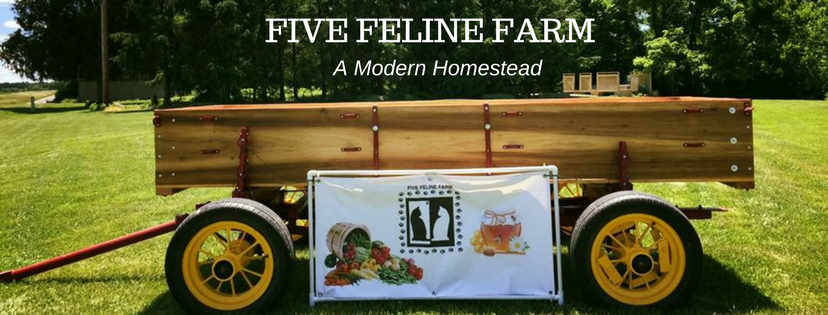Five Feline Farm produces not only vegetables and fruit but an array of herbs to complement any dish. Unfortunately, the growing season is coming to a close in Central Illinois, so it is time to pick some herbs to be held over for winter use.
Herbs can be dried and stored in glass jars or chopped and frozen in ice cube trays. Both of these methods provide a warmth of flavor to winter meals enhanced by knowing there are no fertilizers or pesticides. The down side to dried herbs is a bit of a change in the flavor. Fresh flavor is diminished and although superior to herbs bought in plastic shaker, it is still a dried herb.
Herbs frozen in ice cube trays offer an advantage of holding onto some of the fresh flavor, but the cubes tend to frost over and stick together in time. Plus the added bit of water can be undesirable.
Both of these methods have a place, but recently I started making herb butters to preserve and utilize fresh herbs. Wrapped in waxed paper and sealed in freezer bags these have kept for several weeks. Since butter freezes well, it seems that herb butters should also freeze well.
To start, wash and air dry the herbs. Select a handful of herbs to snip into tiny pieces. Judge both the size of the pieces and the amount of herb by what you would want to find in your finished dish.
Mix the herb thoroughly in one stick of softened butter.
Spread the butter into a rough log about 2 inches from the edge of the waxed paper.
Fold the waxed paper over the log and lightly squeeze into a log.
Roll up the log in the paper and twist the ends.
Label and store in a freezer bag.
To use, unwrap and slice off the amount desired.
The freezer now contains butters with chives, basil, oregano, thyme, curry and rosemary. The options for using these butters is only limited by the cook’s imagination. A slice of chive butter on a baked potato or a bit of basil butter melting over sautéed chicken breast will warm the winter months with a reminder of summer.
What would you put herb butter on? Drop us a comment with your ideas.












